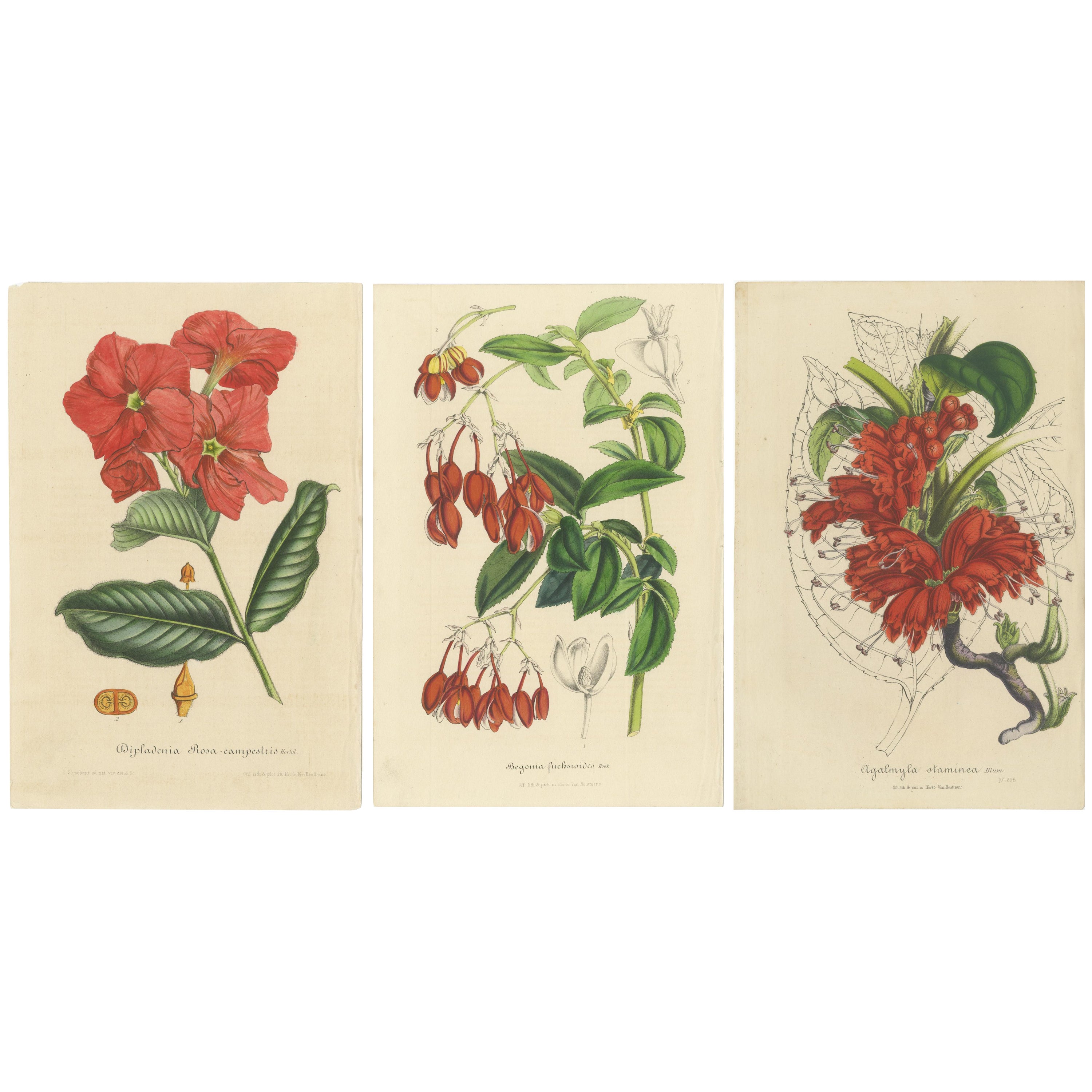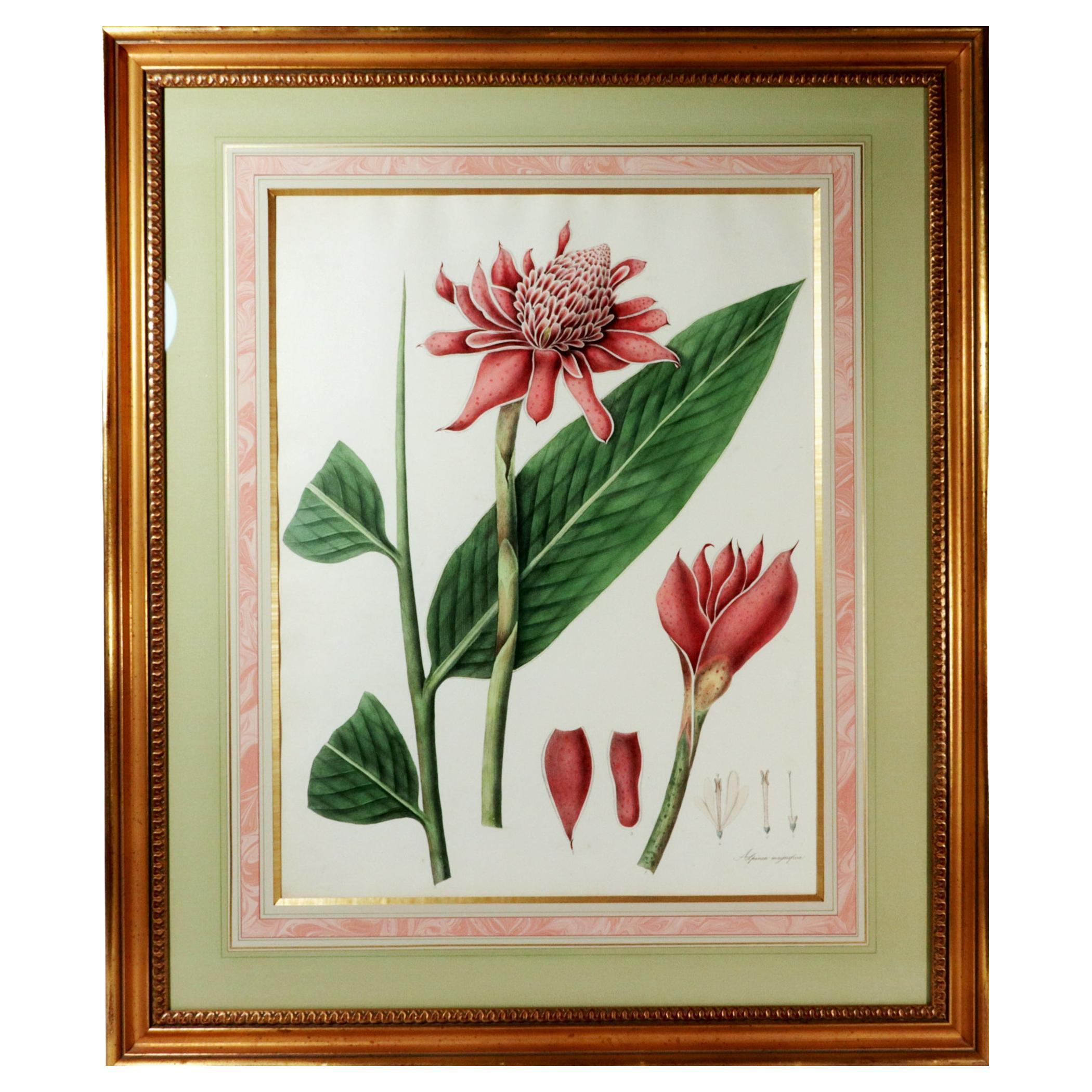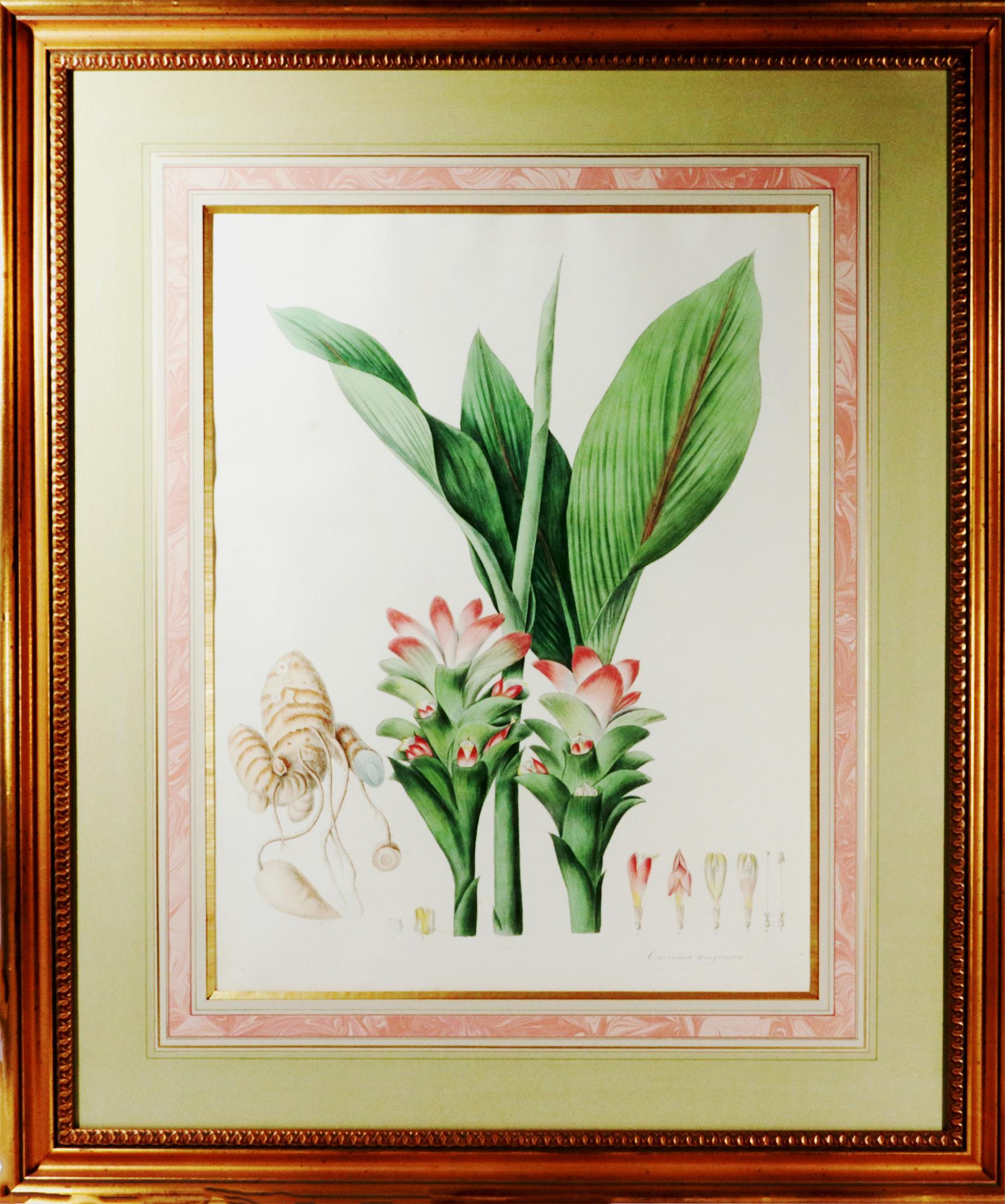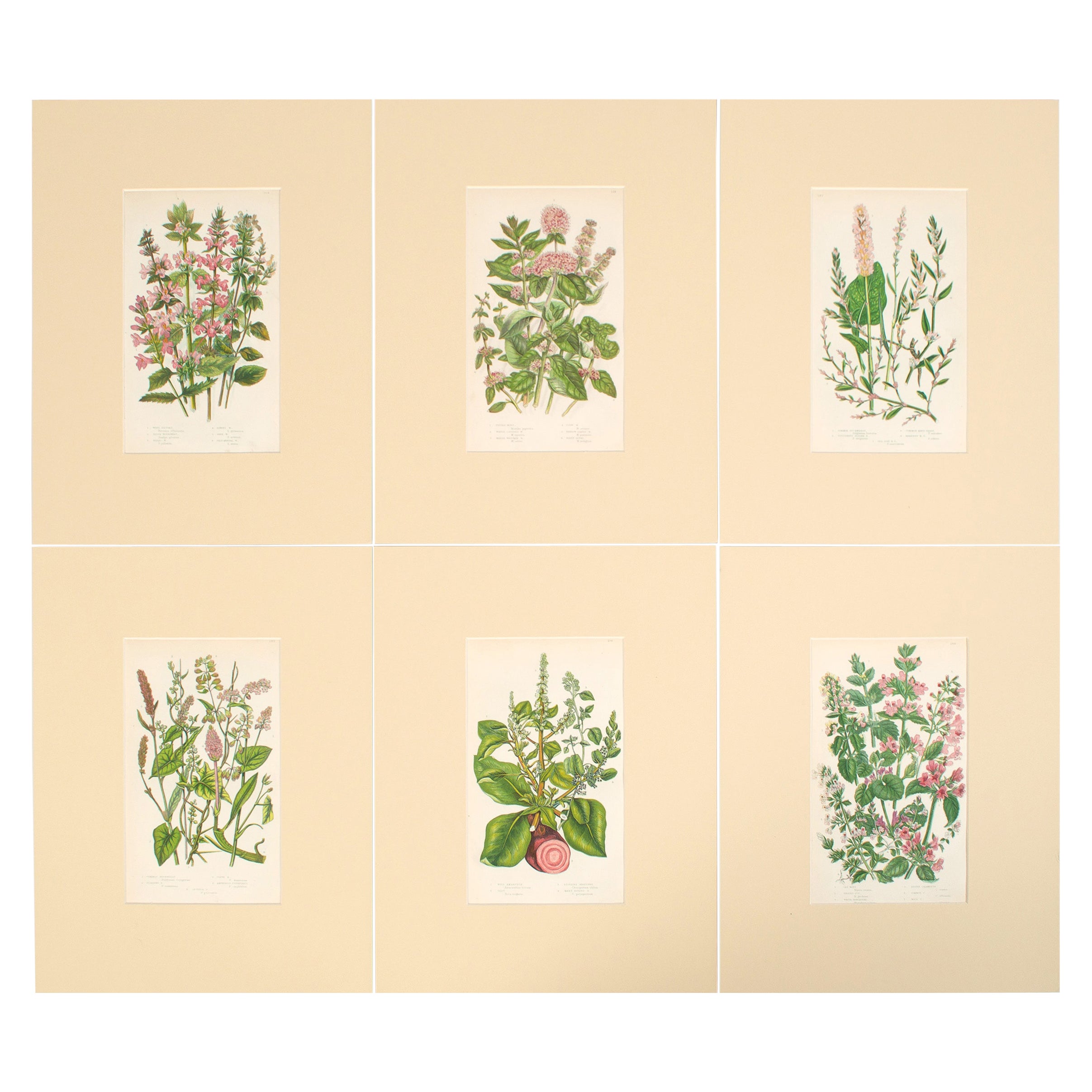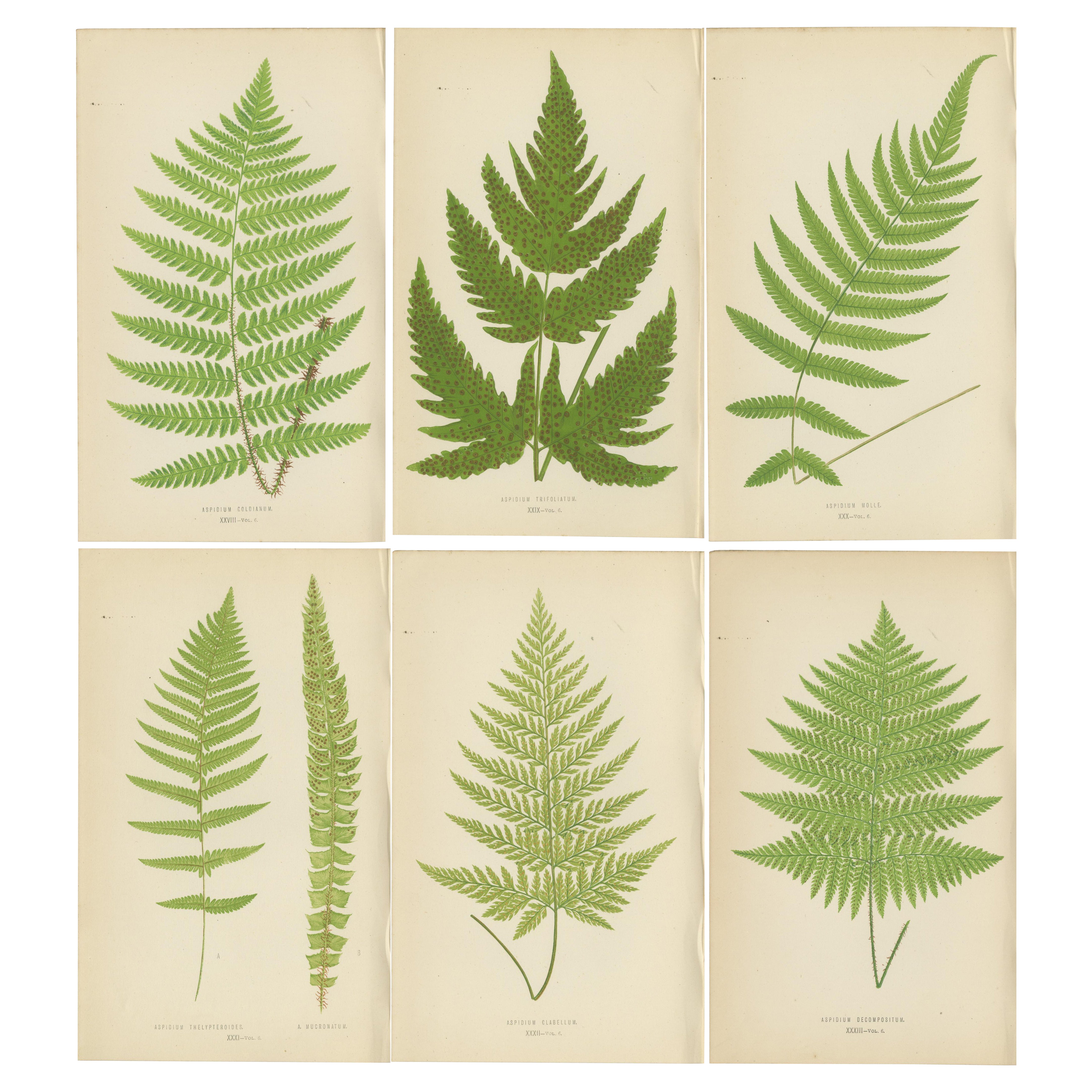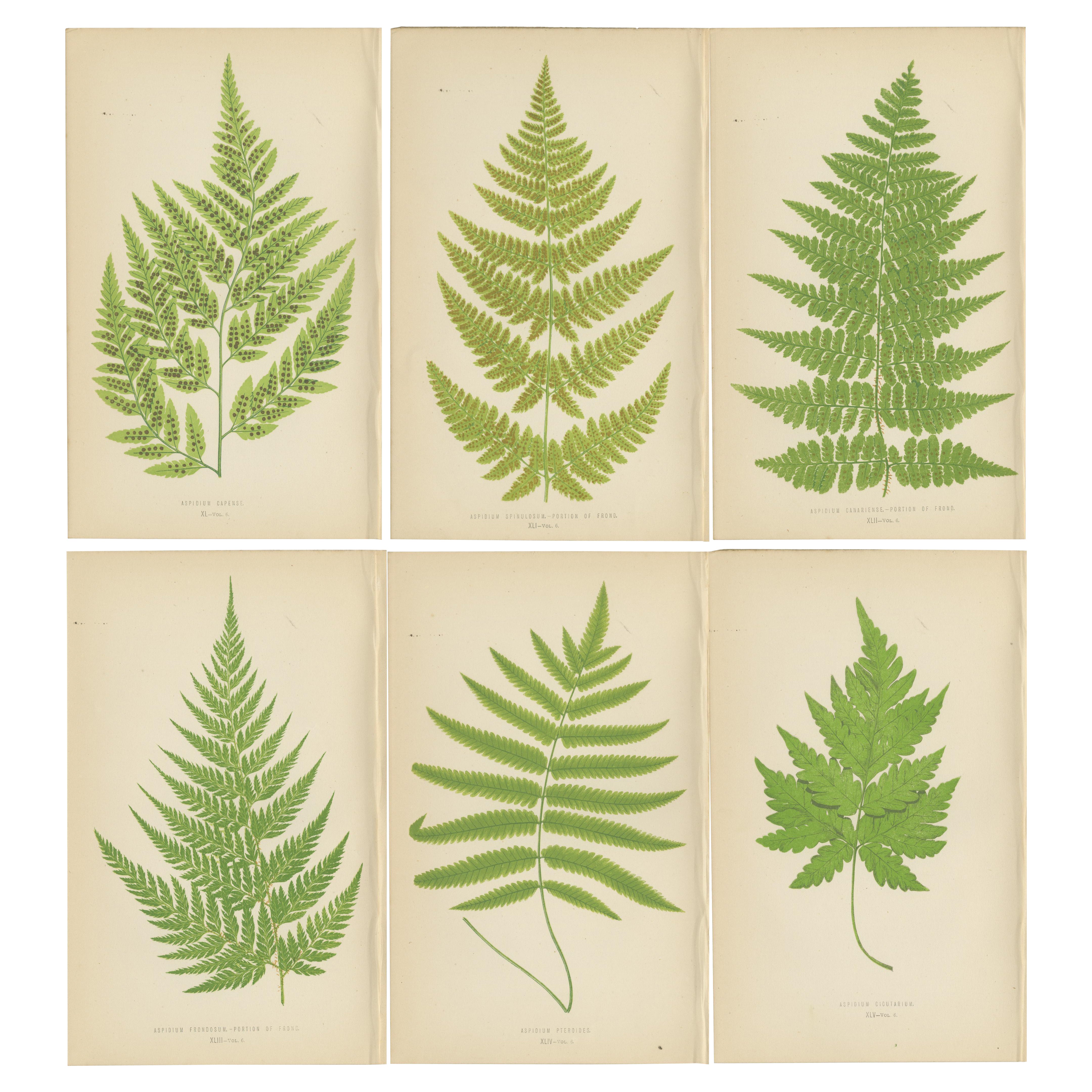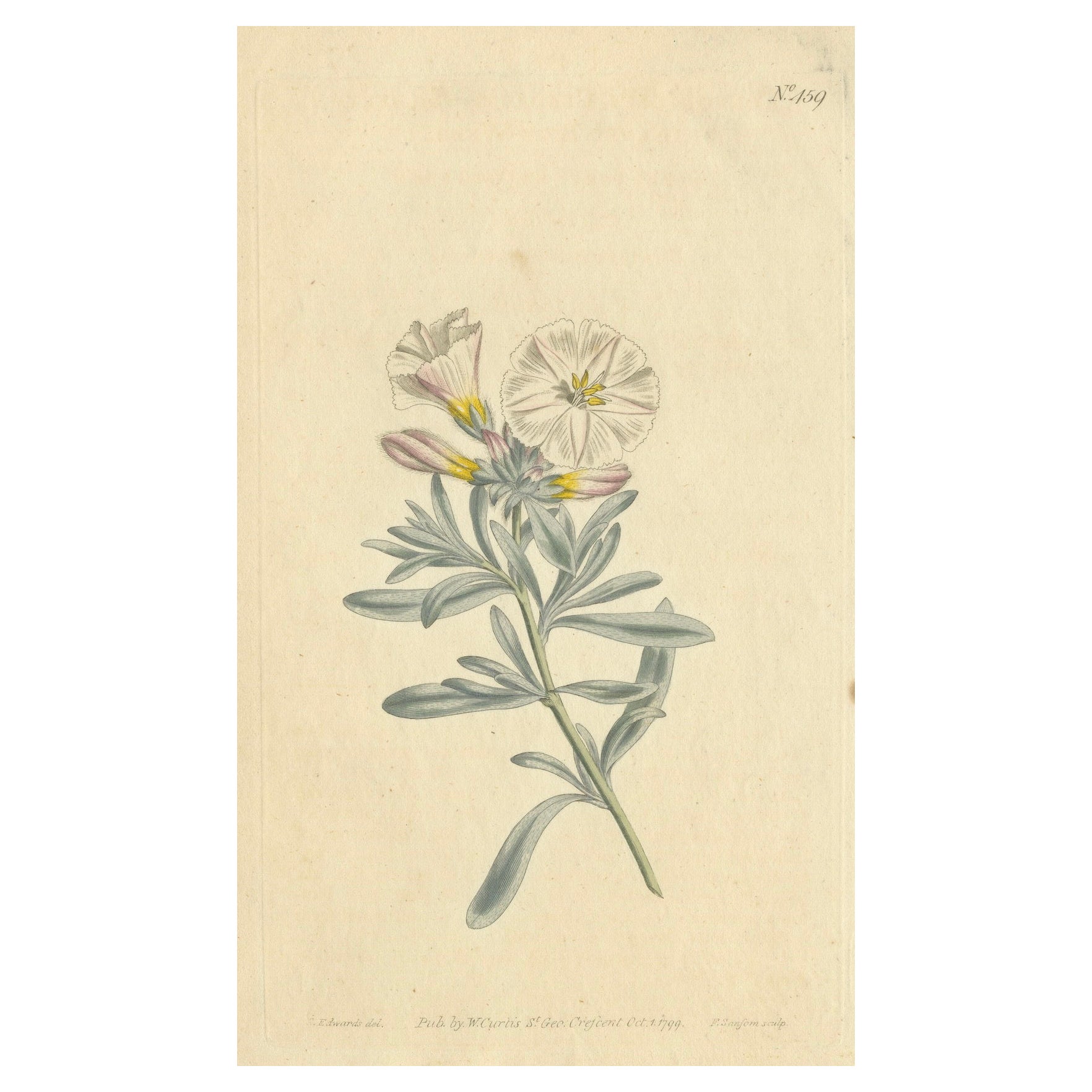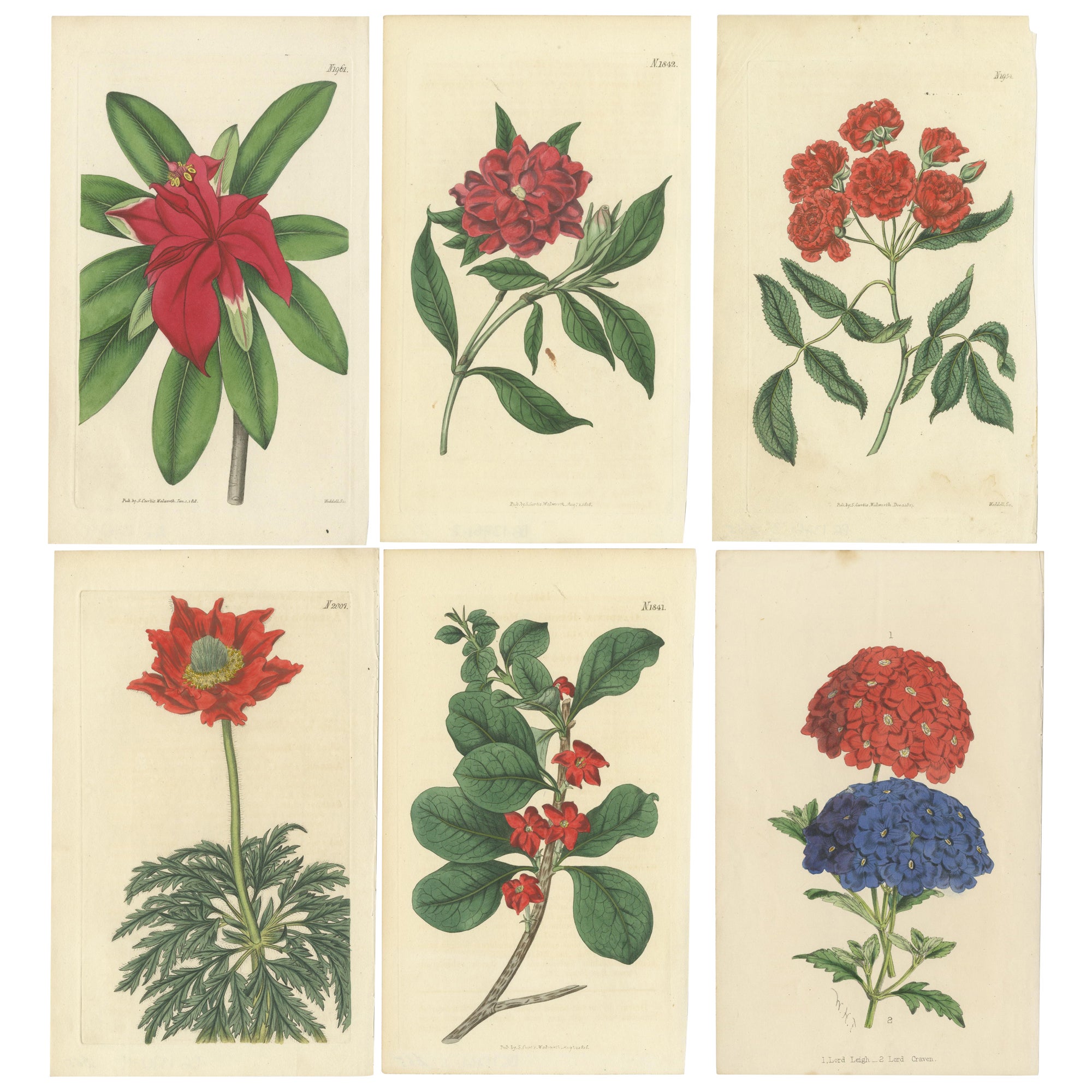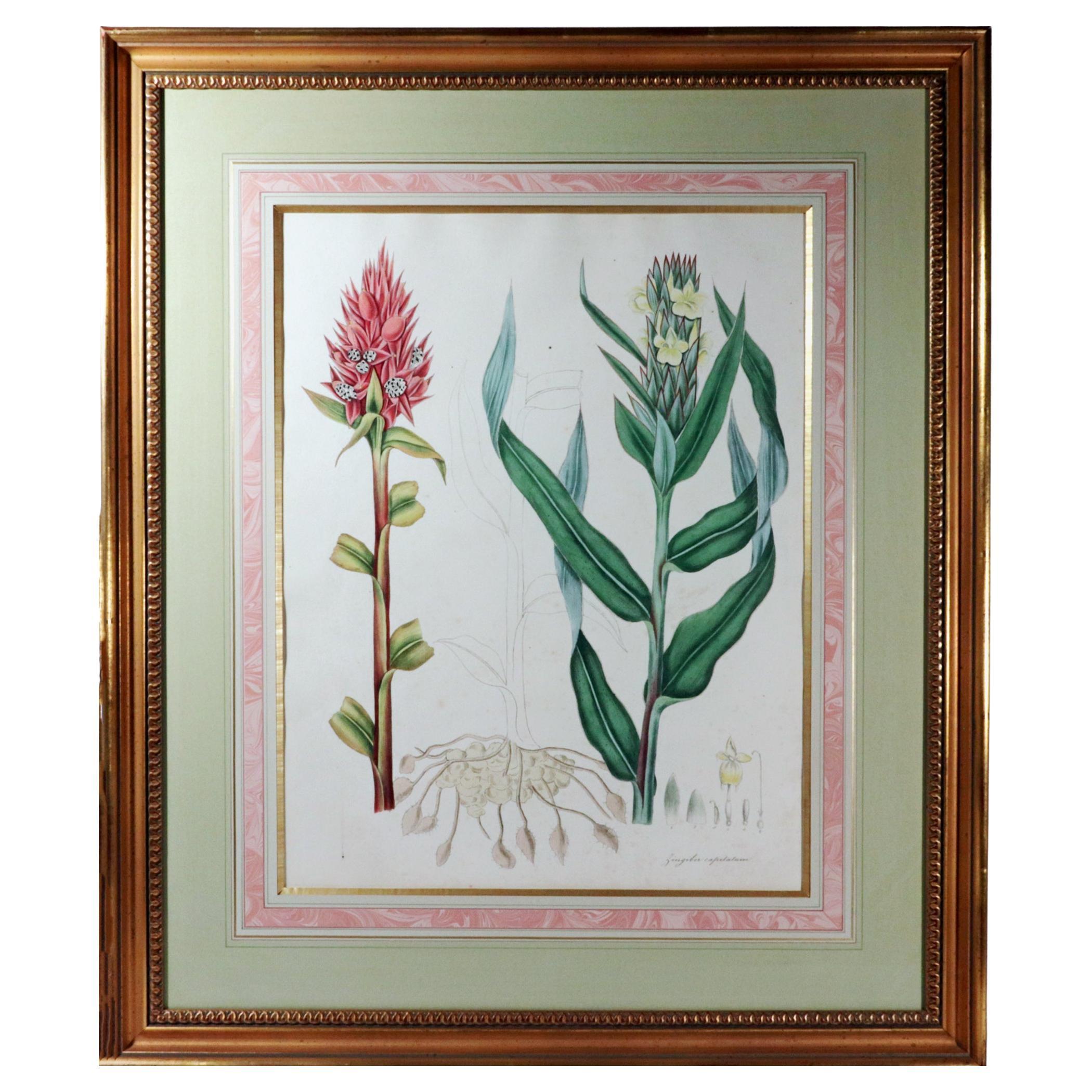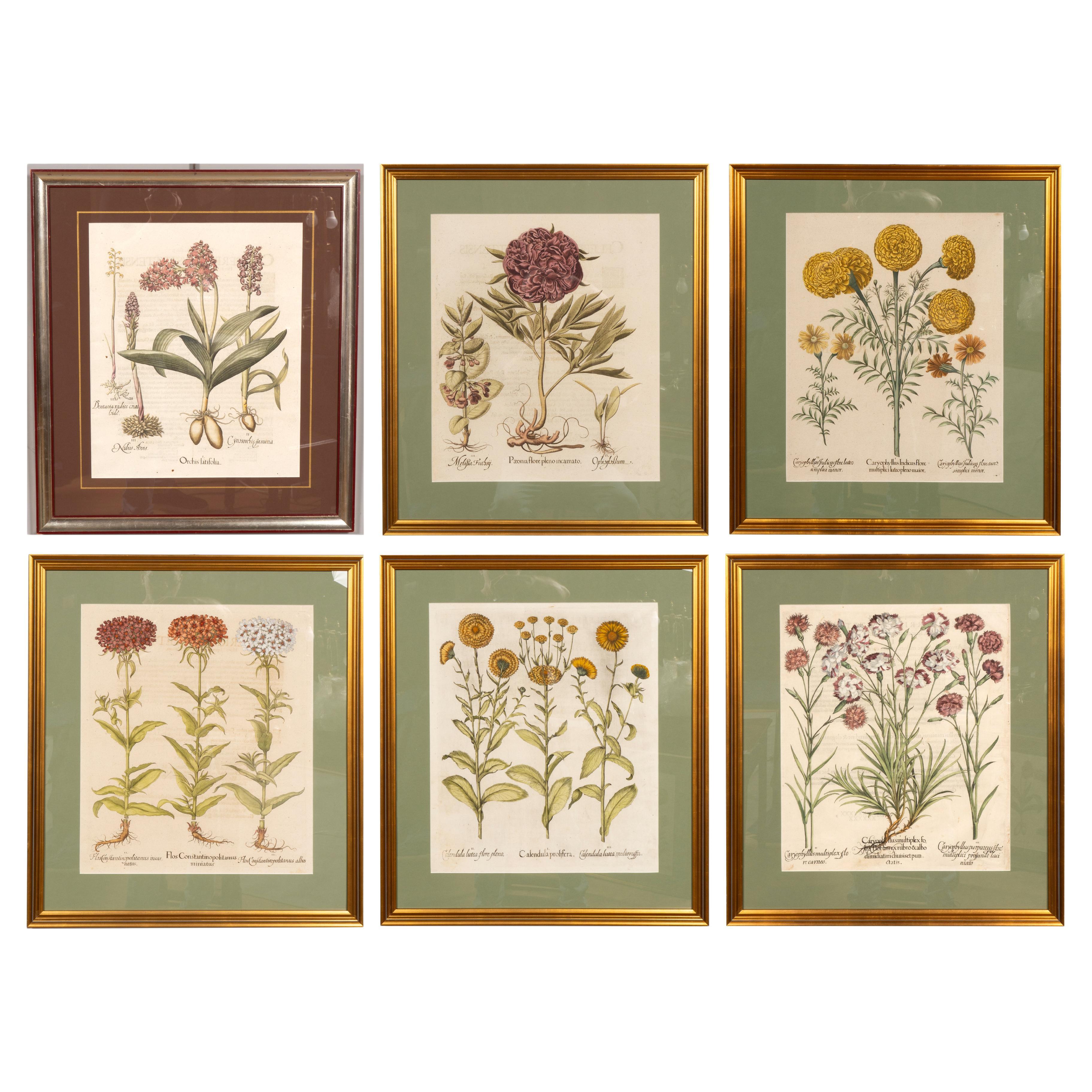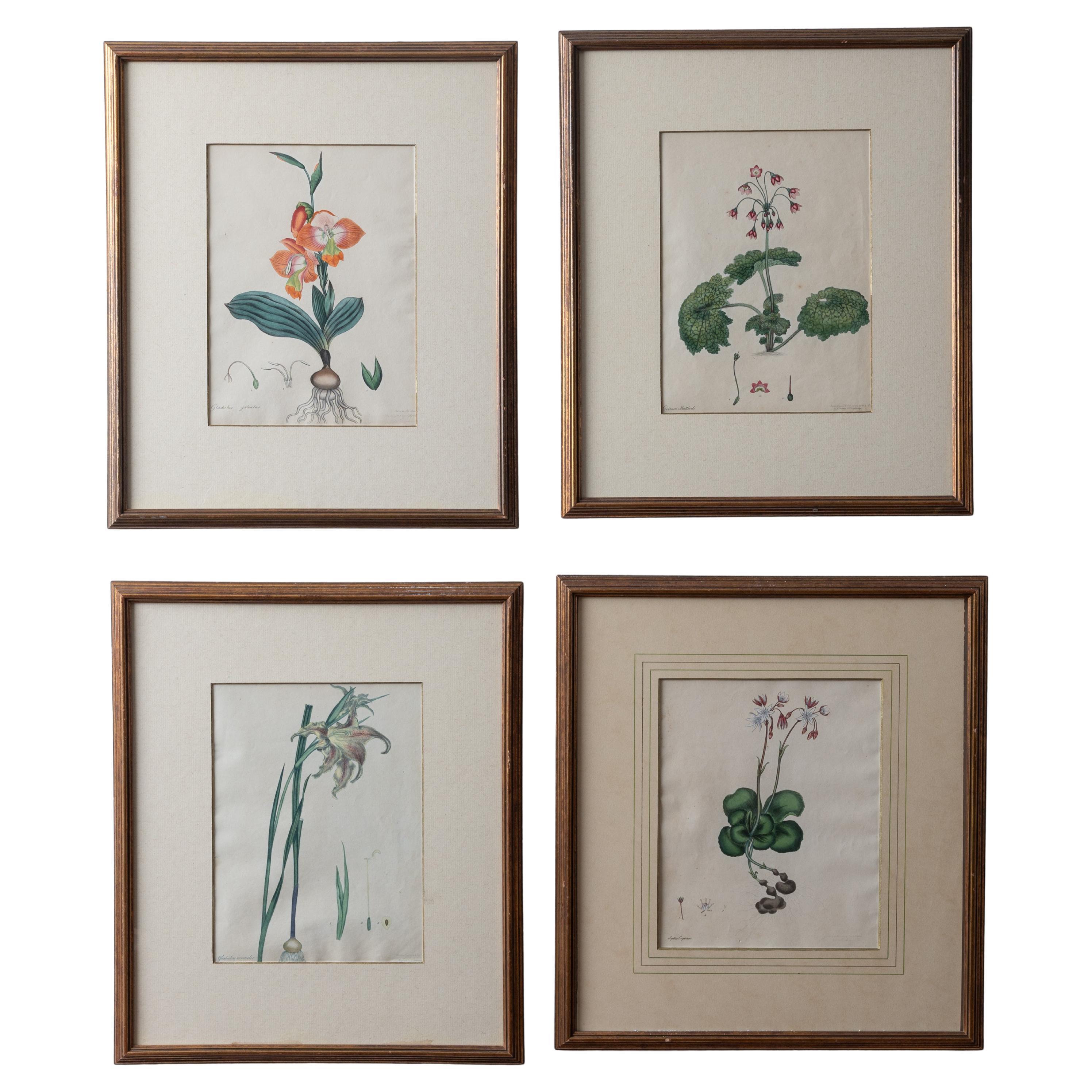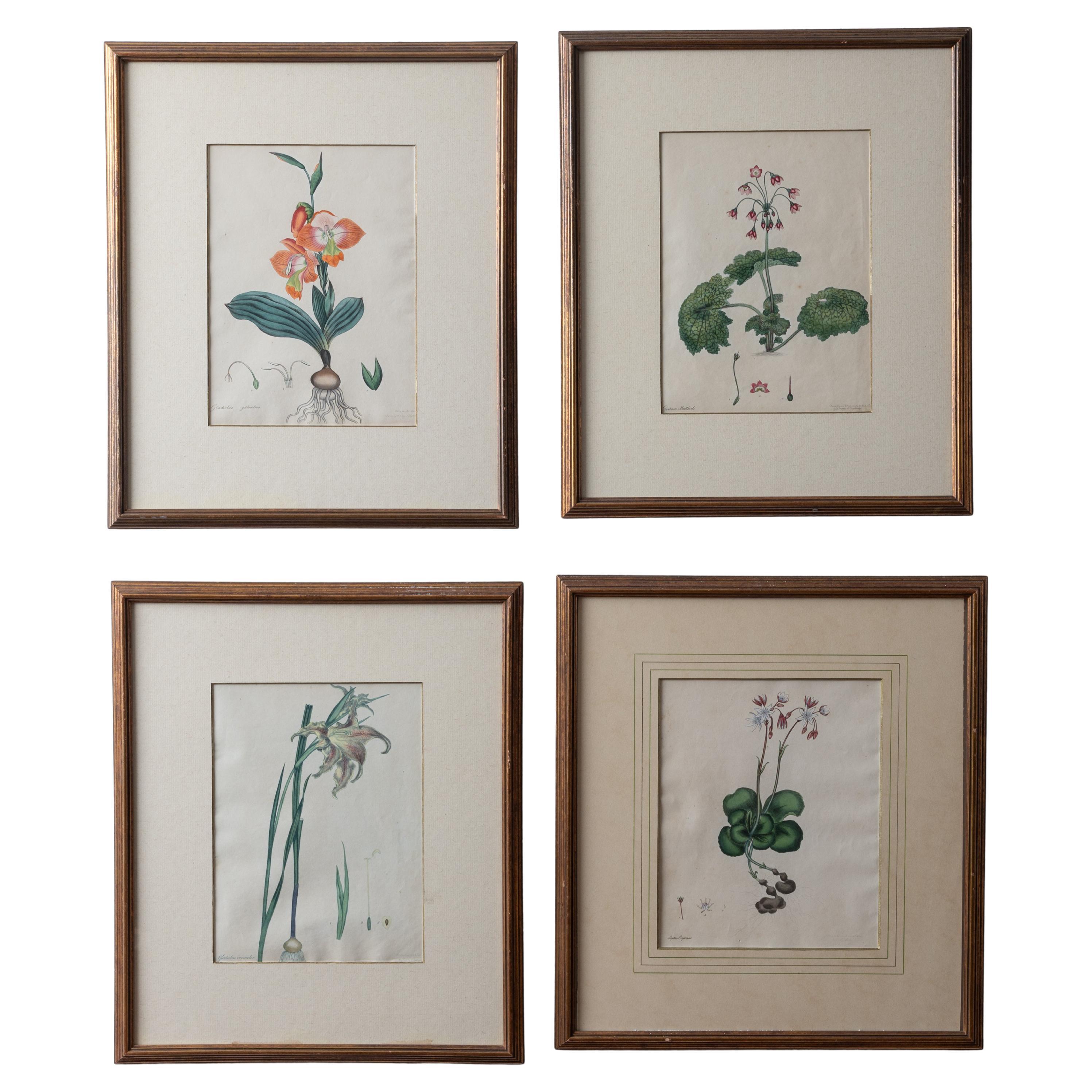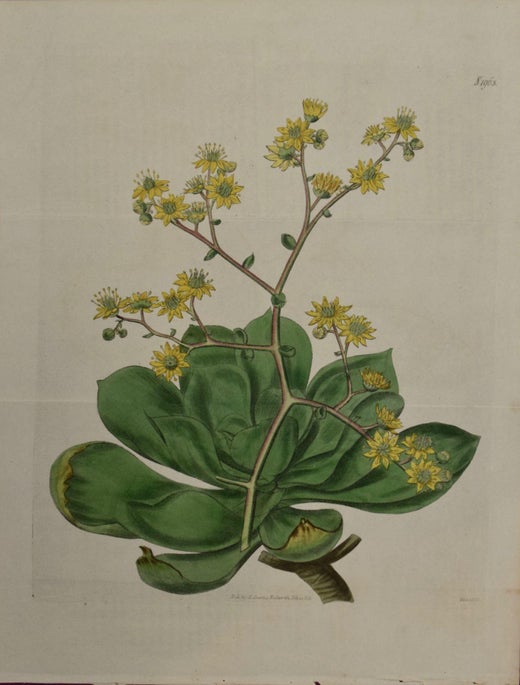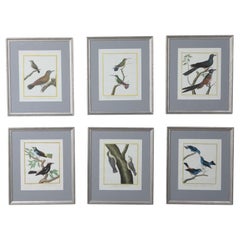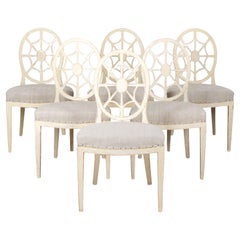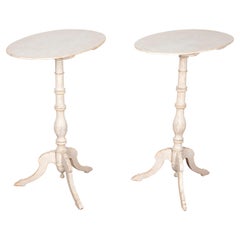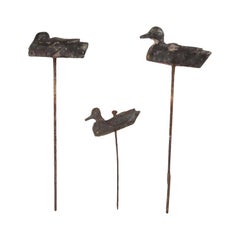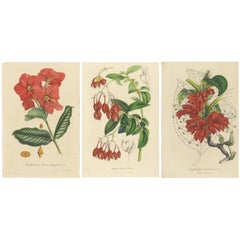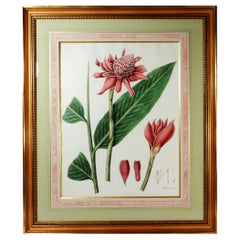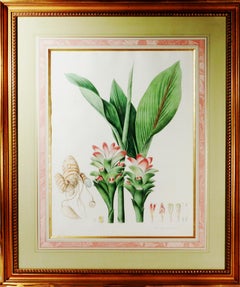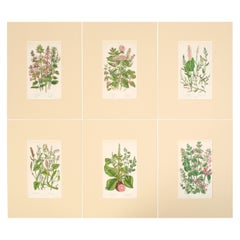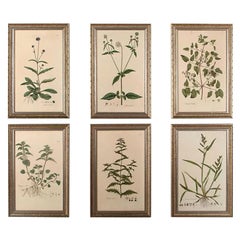
Fine Set of Six William Curtis Botanicals
View Similar Items
Want more images or videos?
Request additional images or videos from the seller
1 of 7
Fine Set of Six William Curtis Botanicals
About the Item
- Creator:William Curtis (Artist)
- Dimensions:Height: 21.66 in (55 cm)Width: 13.78 in (35 cm)Depth: 1.97 in (5 cm)
- Sold As:Set of 6
- Materials and Techniques:
- Place of Origin:
- Period:
- Date of Manufacture:1777
- Condition:
- Seller Location:Tetbury, GB
- Reference Number:1stDibs: LU4256216055942
William Curtis
The 18th century saw an intersection of science and art, especially where it came to botanicals. Artists who had formerly devoted their practice to unique oil paintings of flowers now engaged the media of illustration, as an interest in cataloging flora grew and subscription publications began to thrive. Scientists also crossed the divide, delving into etching, and curating artists and works for issues of botanical magazines. William Curtis was one such botanist. For 13 volumes, Curtis engaged the artistic expertise of dozens of botanical artists to illustrate published guides on plants, beginning in 1787. The hundreds of hand-etched, hand-colored plates are actually unattributed, meaning we don’t see a particular artists’ name or signature, though we know that William Curtis commissioned and curated them. These handmade prints are now treated as individual, collectible works in themselves.
About the Seller
5.0
Gold Seller
Premium sellers maintaining a 4.3+ rating and 24-hour response times
Established in 1998
1stDibs seller since 2018
127 sales on 1stDibs
Typical response time: 2 hours
Authenticity Guarantee
In the unlikely event there’s an issue with an item’s authenticity, contact us within 1 year for a full refund. DetailsMoney-Back Guarantee
If your item is not as described, is damaged in transit, or does not arrive, contact us within 7 days for a full refund. Details24-Hour Cancellation
You have a 24-hour grace period in which to reconsider your purchase, with no questions asked.Vetted Professional Sellers
Our world-class sellers must adhere to strict standards for service and quality, maintaining the integrity of our listings.Price-Match Guarantee
If you find that a seller listed the same item for a lower price elsewhere, we’ll match it.Trusted Global Delivery
Our best-in-class carrier network provides specialized shipping options worldwide, including custom delivery.More From This Seller
View AllSet of Six 18th Century Engravings by Francois Nicholas Martinet
By François Nicolas Martinet
Located in Tetbury, Gloucestershire
Set of six 18th Century beautiful hand coloured copper plate engravings from '1770- 1786 Histoire Naturelle des Oiseaux' Paris Imprimerie Royale by Le Comte de Buffon Georges- Louis ...
Category
Antique 18th Century French Prints
Materials
Paper
Set of Six 19th Century Spider Back Swedish Chairs
Located in Tetbury, Gloucestershire
Set of Six 19th Century Spider Back Swedish Chairs
Re-upholstered in old hemp sheets.
Category
Antique 19th Century Swedish Dining Room Chairs
Materials
Hemp, Wood
Pair of 19th Century Swedish Tables
Located in Tetbury, Gloucestershire
A pair of late 19th century tables with circular tops and decorative carved pedestal tapering to a tripod base with turned feet. These pieces have been repainted.
$4,696 / set
Collection of Wooden Decoy Ducks
Located in Tetbury, Gloucestershire
Decorative collection of three wooden decoy ducks on their original metal spikes. It is unusual to find one of the ducks in the sleeping position.
Category
Antique 19th Century French Animal Sculptures
Materials
Metal
$1,105 / set
Pair of Swedish Veranda Chairs
Located in Tetbury, Gloucestershire
Pair of Gustavian style armchairs with decorative lyres on both sides.
These wonderful pair of chairs have been later painted and newly upholstered in neutral coloured linen.
Originally, these chairs were used as veranda chairs...
Category
Antique 19th Century Swedish Gustavian Armchairs
Materials
Linen, Wood
$5,387 / set
Pair of 20th Century Gustavian Style Armchairs
Located in Tetbury, Gloucestershire
Pair of 20th century Gustavian style armchairs, repainted in soft grey.
Newly upholstered in linen.
Category
20th Century Swedish Gustavian Armchairs
Materials
Linen
$5,663 / set
You May Also Like
Exquisite Botanical Illustrations from Curtis’s Botanical Magazine (1847)
Located in Langweer, NL
These beautiful hand-colored botanical illustrations, drawn and lithographed by the renowned artist Walter Hood Fitch, were featured in Sir William Jackson Hooker's *"Curtis's Botanical Magazine,"* published in London in 1847. Fitch was one of the most prolific and skilled botanical illustrators of the 19th century, known for his ability to capture the intricate details and vibrant hues of the plants he depicted.
Sir William Jackson Hooker, a famous British botanist and the director of the Royal Botanic Gardens, Kew, commissioned these illustrations as part of his work to document newly discovered plants from around the world. The *Curtis’s Botanical Magazine* has been published since 1787 and remains one of the longest-running botanical periodicals.
Detailed Descriptions of Each Plant
#### 1. **Dipladenia Rosa-campestris** (*Hortul. ex Veitch*)
- **English Name**: Rose Dipladenia
- **Description**: This illustration showcases *Dipladenia rosa-campestris*, a striking flowering plant known for its showy pink to deep red trumpet-shaped flowers. Native to tropical regions of South America, particularly Brazil, *Dipladenia* belongs to the family Apocynaceae and is prized in horticulture for its vibrant blooms and ability to climb. Fitch's illustration emphasizes the waxy leaves and the vivid color of the petals, bringing the plant to life on the page.
#### 2. **Begonia fuchsioides** (*Hook.*)
- **English Name**: Fuchsia-flowered Begonia
- **Description**: The *Begonia fuchsioides* is depicted with its characteristic red, pendulous flowers, which closely resemble the blooms of fuchsia plants. This species of Begonia is native to tropical regions and is popular for its delicate, bell-shaped flowers and glossy leaves. Fitch’s attention to the arrangement of the leaves and the contrast between the flowers' vibrant red and the soft green leaves provides a lifelike representation of this exotic plant.
#### 3. **Agalmyla staminea** (*Blume*)
- **English Name**: Staminate Agalmyla
- **Description**: This illustration captures the unique red tubular flowers of *Agalmyla staminea*, a plant native to Southeast Asia. The species is part of the Gesneriaceae family and is known for its bright, showy flowers that grow in dense clusters. Fitch’s careful rendering of the plant’s leaves and the intricate veining, along with the vibrant red flowers, highlights his talent for bringing the botanical subject to life with both scientific accuracy and artistic flair.
### About the Makers
#### **Walter Hood Fitch** (Artist and Lithographer)
Walter Hood Fitch (1817–1892) was one of the most influential botanical artists of the 19th century, working primarily with Sir William Hooker and later his son, Joseph Dalton Hooker, at Kew Gardens. He produced thousands of illustrations for various botanical publications, including *Curtis’s Botanical Magazine*, where he was responsible for the majority of its plates from 1834 to 1877. Fitch’s mastery of lithography allowed him to create richly detailed and accurate depictions of plants, with a particular talent for illustrating both the botanical structure and the vibrant colors of flowers.
#### **Sir William Jackson Hooker** (Director and Editor)
Sir William Jackson Hooker (1785–1865) was a prominent British botanist and the director of the Royal Botanic Gardens, Kew. Under his leadership, Kew Gardens expanded its collection of plants from around the world, and Hooker was instrumental in promoting the scientific study and illustration of these species. As the editor of *Curtis’s Botanical Magazine*, Hooker collaborated with Fitch to document and share the beauty and diversity of plants with the scientific community and the public.
### The Lithographic Technique
Lithography, particularly chromolithography, was a crucial innovation in botanical illustration. Fitch was skilled in the traditional method of lithography, where an image was drawn onto a stone plate with a greasy substance and then inked for printing. Hand-coloring was often applied afterward to bring the prints to life, as seen in these illustrations. This method allowed for highly detailed, accurate representations of plants and their botanical features, making it invaluable for both scientific study and aesthetic appreciation.
### Conclusion
These prints from *Curtis’s Botanical Magazine* reflect the height of botanical art in the mid-19th century. The combination of Walter Fitch...
Category
Antique 1840s Prints
Materials
Paper
William Roscoe Large Botanical Print of Tropical Plant
Located in Downingtown, PA
William Roscoe Botanical Tropical Plant Print,
Alpinia Magnifica,
Monandrian Plant of the Order Scitamineae,
Published 1828
A spectacularly large and beautifully framed botanical pr...
Category
Antique 1820s English Regency Prints
Materials
Paper
William Roscoe Botanical Large Print of Tropical Plant
Located in Downingtown, PA
William Roscoe Botanical Large Print,
Curcuma Aeruginosa,
Monandrian Plants of the Order Scitamineae,
1828
From a set of four -sold individually.
A spectacularly large and beautifu...
Category
Antique 1820s English Regency Prints
Materials
Paper
Set of Six English 19th Century Botanical Engravings, England, C.1880
Located in London, GB
A set of six English 19th century Botanical Engravings, England C.1880.
Mounted, ready to be framed.
Fine examples, in excellent condition commensurate of age.
Category
Antique Late 19th Century English Victorian Prints
Materials
Paper
Rare Antique Set of Six Botanical Fern Prints by E.J. Lowe (1868)
Located in Langweer, NL
Title: Rare Antique Set of Six Botanical Fern Prints by E.J. Lowe (1868) - Aspidium Species
Description: This exquisite set of six botanical fern prints, created by the renowned British botanist Edward Joseph Lowe...
Category
Antique 1860s Prints
Materials
Paper
$436 Sale Price / set
20% Off
Rare Set of Six Botanical Fern Prints by E.J. Lowe (1868) – Aspidium Species
Located in Langweer, NL
Rare Set of Six Botanical Fern Prints by E.J. Lowe (1868) – Aspidium Species Chromolithographs
Description: This stunning set of six original hand-colored botanical fern prints was created by the prominent British botanist Edward Joseph Lowe in 1868. The collection showcases six different species of ferns from the *Aspidium* genus, rendered in exquisite detail using the chromolithography technique, which captures vibrant colors and precise details. These rare prints are perfect for collectors of antique botanical art...
Category
Antique 1860s Prints
Materials
Paper
$408 Sale Price / set
25% Off
